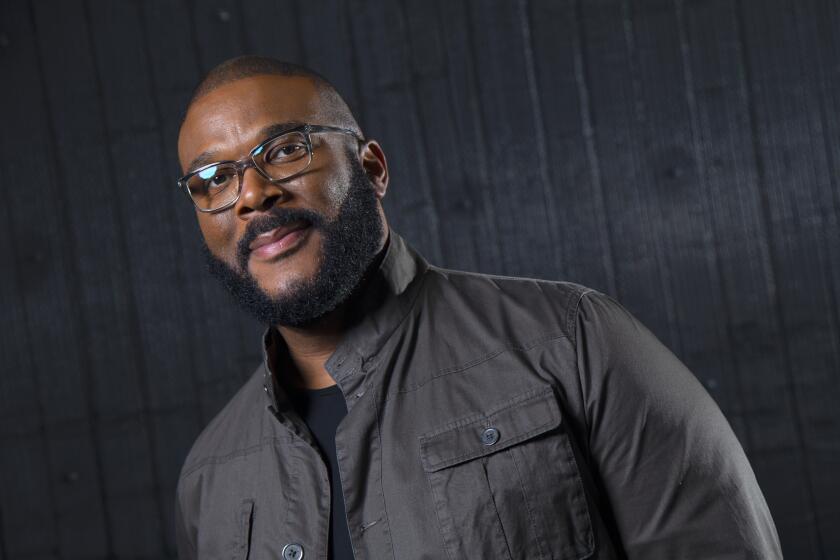Oguri Still Challenging Physical Limits
- Share via
There comes a moment in every performance by locally based dancer-choreographer Oguri when something unbelievable happens--some incredible transformation that makes you understand butoh not as a neo-Expressionist style of performance or a grueling physical discipline but as a laboratory for defining and transcending human limits.
That moment came at the Japan America Theatre on Saturday late in “In Between the Heartbeat,” Oguri’s new collaboration with designer-performance artist Hirokazu Kosaka and composer Yuval Ron. Standing nearly naked against a huge painted archery target, his back to the audience, he began to slowly bend his neck and shoulders in an impossible backward arc until his upside-down head faced toward us while his body continued to stand facing in the opposite direction.
It wasn’t a backbend: He stood straight up against the flat archery curtain. And it wasn’t a virtuosic, sculptural Pilobolus/Momix contortion so much as the scary final example of what his program note called “a body in crisis.” Earlier, he portrayed that crisis in a long sequence of anguished discontinuities for himself and three members of his Renzoku company: Roxanne Steinberg, Boaz Barkan and Jamie Burris. Wearing hooded black rain slickers, they executed compulsive, isolated tasks--initiating a crumpled shoulder stand or carrying a metal bucket nowhere in particular or sending a flurry of hand signals into the beyond or simply standing on one foot and wagging the other.
If you thought of them as the infirm, homeless or just plain social outcasts, that perception would bring you close to one of butoh’s original missions: speaking for a whole class of people ignored in Japan’s postwar rush to reinvent itself as squeaky clean, superrational and peerlessly efficient. And when these urban refugees eventually dispersed under the blinding glare of searchlights, you could understand that public attention has become one more form of oppression in their lives.
Ron’s sound-score heightened that oppression with ominous buildups of mechanical noise accented with thunder claps suggesting the slamming of enormous metal doors. Elsewhere, for contrast, came the tinkle of glass wind chimes, delicate woodwind washes and distant birdcalls: a whole other landscape, and perhaps only a fantasy.
Kosaka’s contributions included his trademark electric blankets--hung across the back wall and spread on the floor in a multicolored patchwork--along with the archery target and, in a very real manifestation of threat, an arrow flying across the stage just over the heads of the dancers. Morleigh Steinberg designed the resourceful lighting.
In the 1996 work-in-progress version of “In Between the Heartbeat,” the dominant image involved Oguri writhing atop a photocopier, with the sound and light of the machine establishing a familiar yet somehow frightening audio-visual rhythm. In 1998, however, the photocopier sequence served as a kind of overture, with Oguri rising on one out of the orchestra pit and soon being doubled (copied?) by Barkan on the stage. After that, the sound of the copier remained a key motif--while its light eventually morphed into the searchlight glare--but the finished work seemed less about the inhumanity of the Information Age than sources of pain far deeper, darker and more enduring in contemporary life.
Preceding the 65-minute performance: a 60-minute delay caused by typical but more-than-usually-disastrous problems with the Japan America Theatre’s processing of will-call tickets. Since the JAT staff seems incapable of addressing these problems, at the very least it should schedule free performances on the adjacent plaza to distract the endless line of disgruntled patrons.
More to Read
The biggest entertainment stories
Get our big stories about Hollywood, film, television, music, arts, culture and more right in your inbox as soon as they publish.
You may occasionally receive promotional content from the Los Angeles Times.










